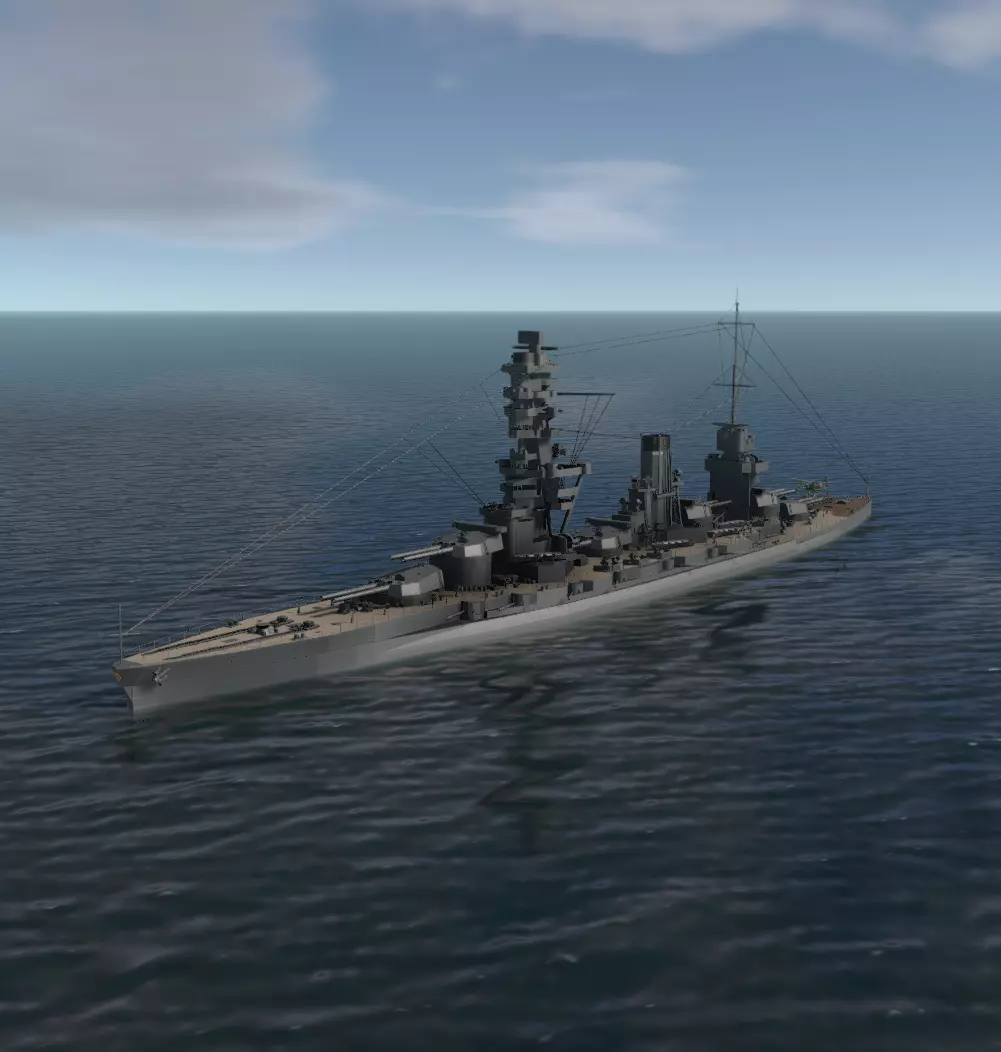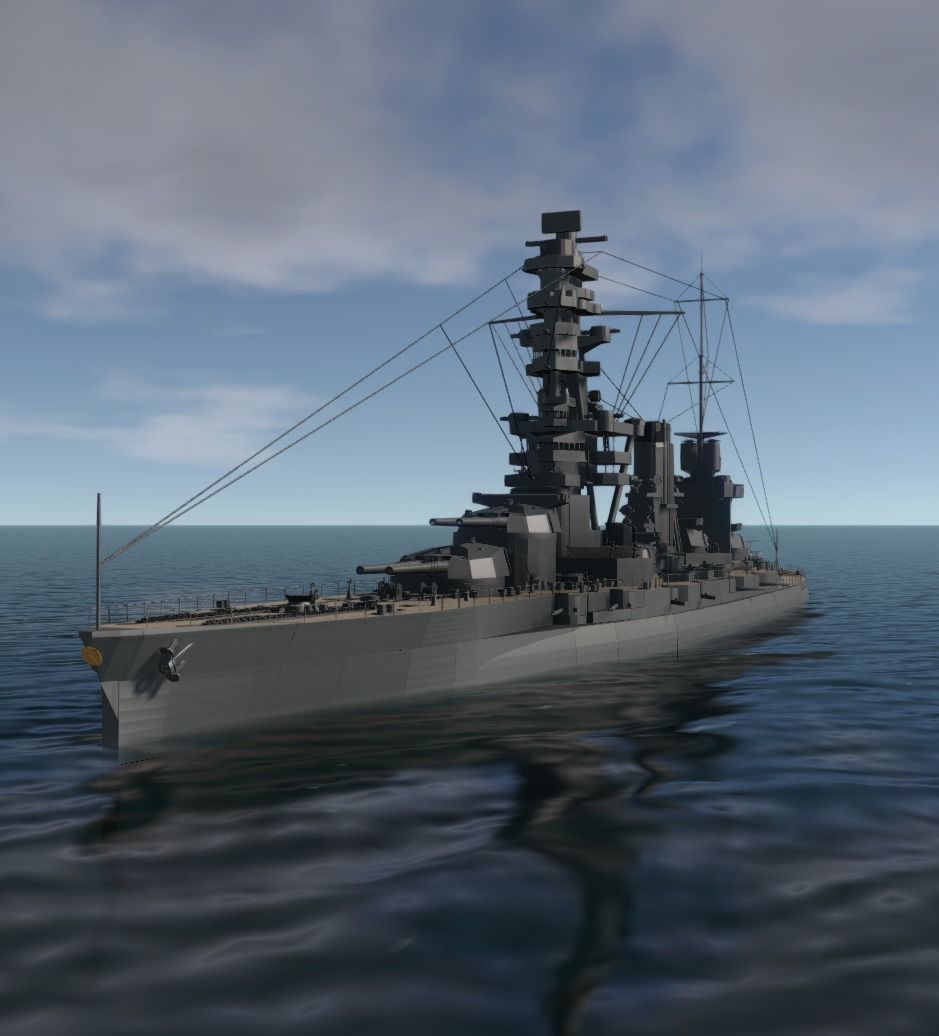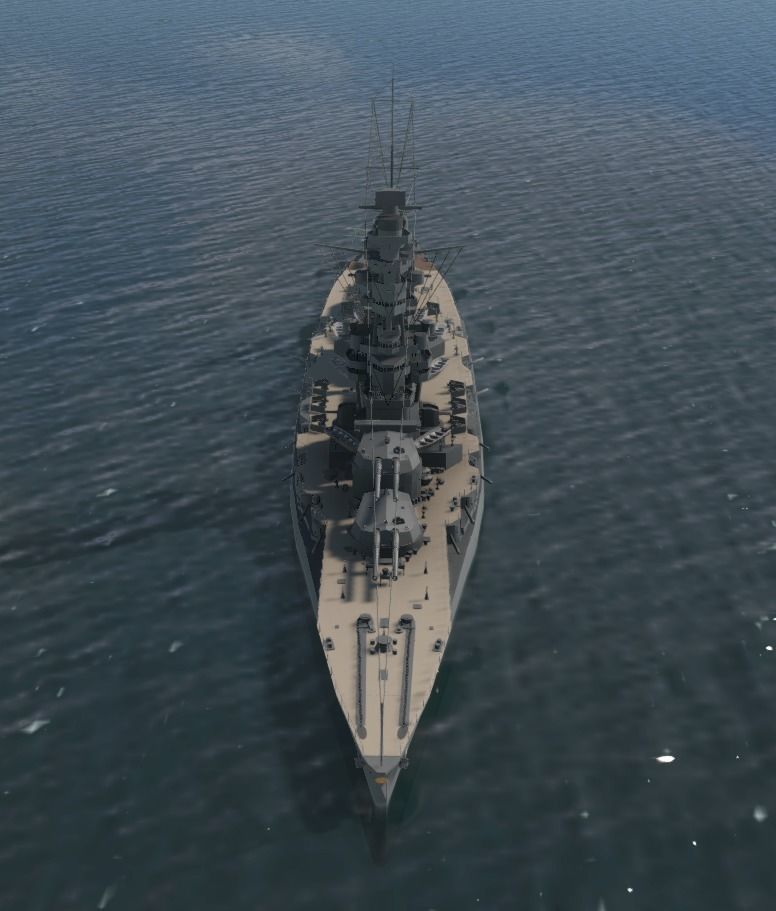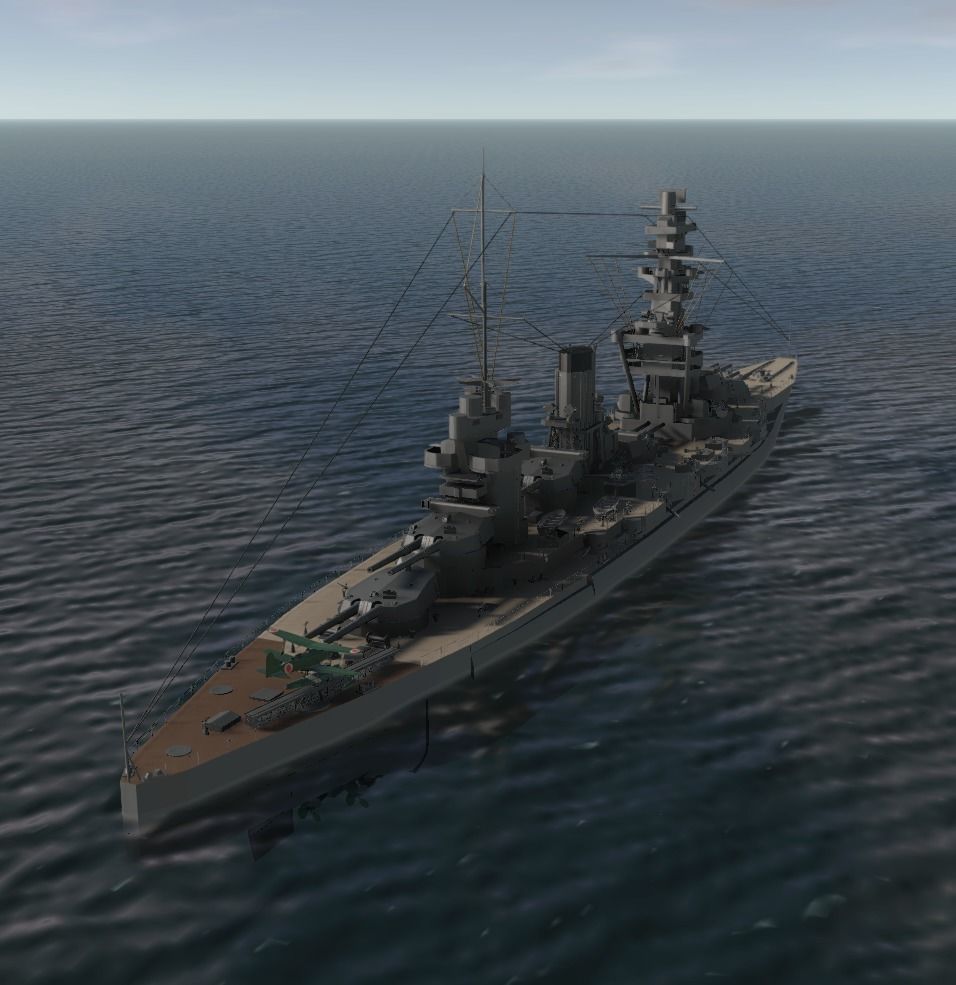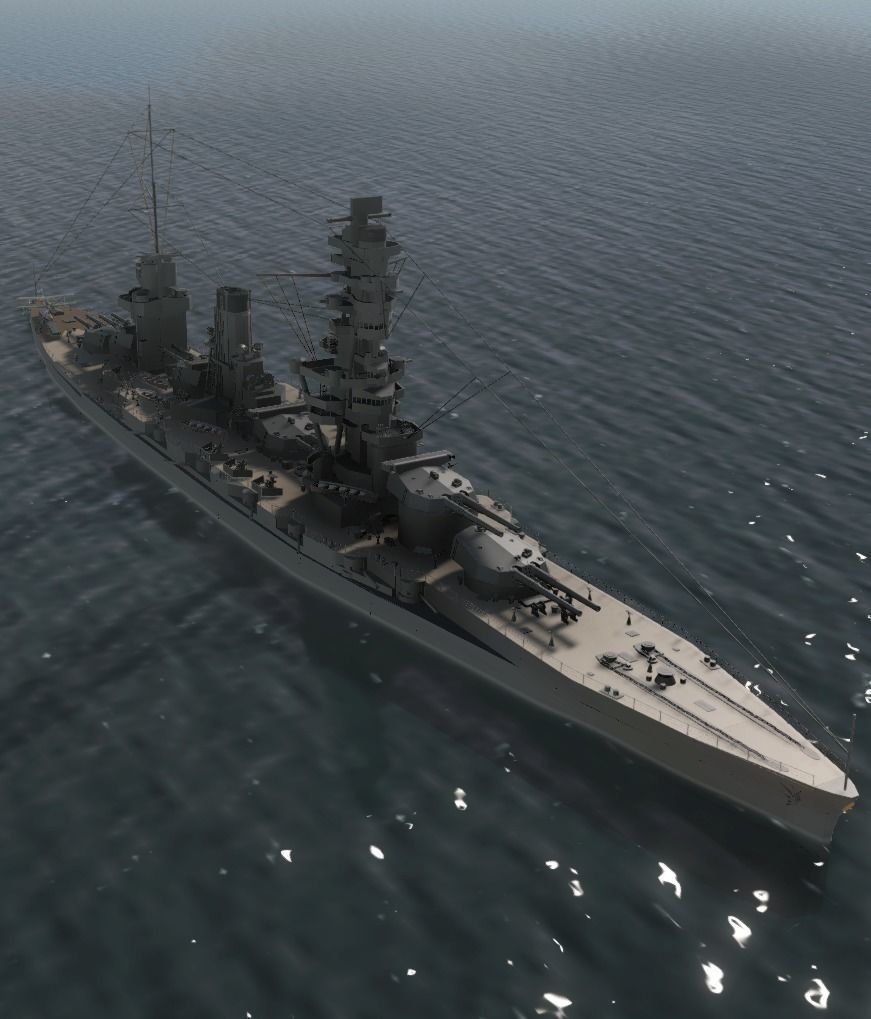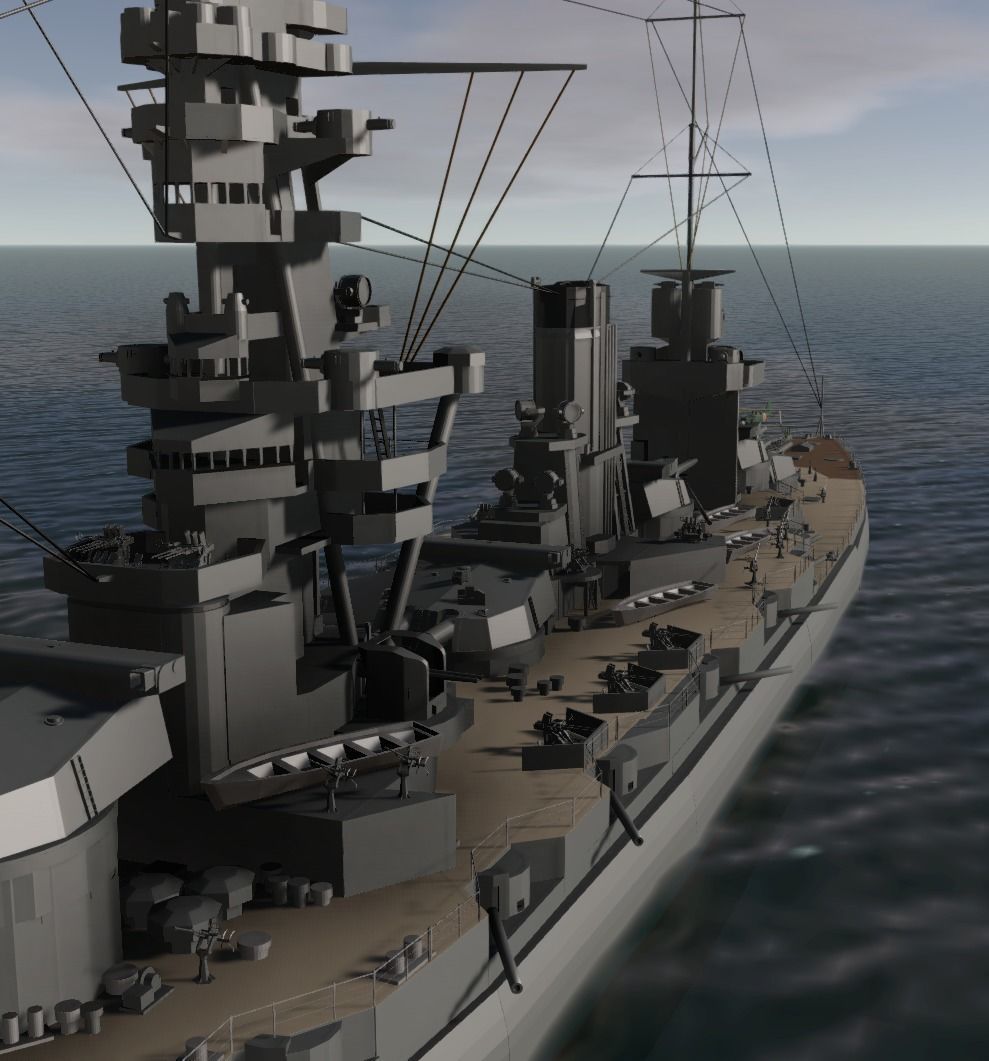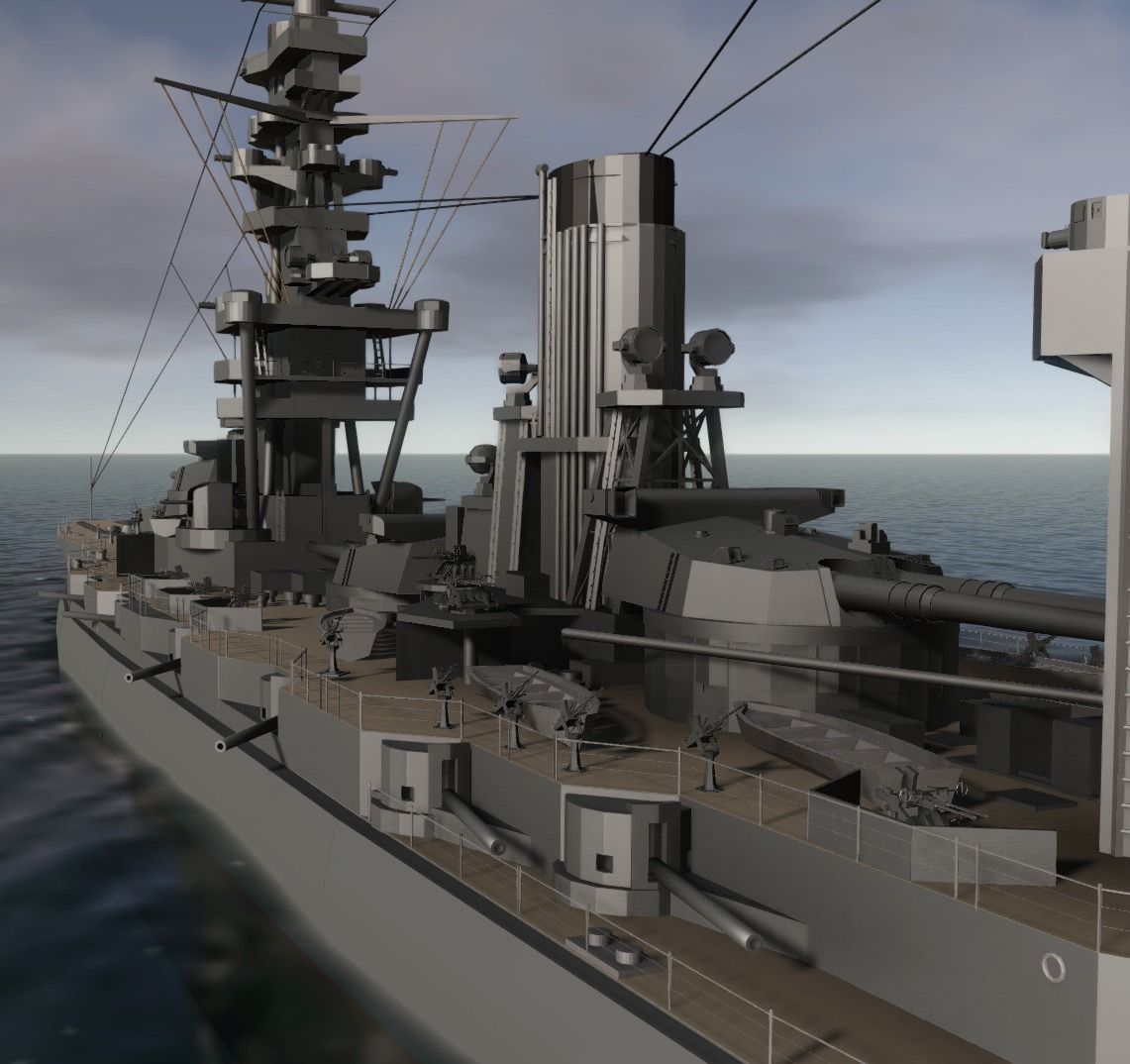
JAPANESE BATTLESHIP FUSO 3D MODEL 3D model
Fuso, YamashiroThese mighty dreadnoughts were in fact distant derivatives of the HMS Dreadnought in 1906. Their plans were first conceived in Japan, but they were not the result of previous experience, notably that of the Battle of Jutland in the west. The engineers, however, had worked on a ship approaching the speed of a battle cruiser, while having the classic protection of a dreadnought. To accommodate her enormous machinery, capable on plans, to deliver more than 25 knots, the hull was roomy.
IJN Fuso and Yamashiro were started in 1912 in Japan, launched in 1915 at Kure and Yokosuka and entered service in 1917. They were then the most powerful warships in the world, outclassing anything that floated so far, within the Royal or the US Navy, a true symbol of imperial ambitions in Asia. In terms of armament, these two Japanese Battleships conventionally arranged their artillery, derived from Vickers Armstrong models, in six axial twin turrets. This gave a them a powerful broadside salvo but limited hunt and retreat fire due to the central turrets very limited arc of fire. However, these two ships kept their secondary barbette guns for a long time, and their AA was at first, very limited.
Serious things will start around 1925 as new super-dreadnoughts were cancelled by Treaty, later converted as aircraft carriers. The reconstruction and overhaul of the Fuso started in 1930 and went on until in 1933, resumed in 1935 until 1937, and for Yamashiro, a single time, but from 1930 to 1935. These years were well used, to rebuild their machinery and change their boilers, resulting in a new silhouette, aft blockhouse, installation of catapult, housing for three on-board seaplanes, new rangefinders, new bridge with multiple utility decks and observation posts along the tripod, state-of-the-art optics, and a completely modern, powerful AA. The hull was also seriously enlarged with bulges to improve their underwater protection. In the end, this process made them reach 39,150 tons for a top speed maintained to 25 knots. However in 1939, despite their recent modernization, the two ships were considered ancestors. However fast and formidable, they formed a significant part of the naval forces of the Empire of Japan, then made up of three pairs: Fuso, Ise and Nagato, as well as the four Kongo.
